Today's Guide to the Marketing Jungle from Social Media Examiner...
presented by 
The weekend is almost here, Pz! Here's a recap of the most important insights, trends, and updates from the week. Catch up in minutes and go into next week prepared.
In today's edition:
-
Bridging the brand gap in your stage 1 LinkedIn ads
-
Marketing strategy tips for the 2025 holiday season
-
A rundown of the latest tools and features from YouTube
-
A customer-led marketing strategy that improves revenue
-
Learn how to put AI to work in traditional businesses
-
Instagram Updates: Edits App Features, Inbox Tools, Pinnable Comments, and More
-
Marketers' AI adoption trends and practical applications: Insights from Michael Stelzner
-
🗞️ Industry news from Anthropic, LinkedIn, Threads, and more

Stage 1 Ads That Bridge Personal Credibility and Brand Recognition
Your top-performing LinkedIn ad might not even mention your brand, and that could be a problem.
In Stage 1 of the funnel, Thought Leader Ads are outperforming polished brand campaigns because they feel human, spark authentic connections, and build trust quickly with cold audiences. Every like, share, and comment expands your retargeting pool.
But there's a hidden challenge: the trust you're building is often established with a person, not your company. When your brand ad shows up next in the funnel, many prospects don't make the connection, and that subtle disconnect can quietly weaken your strategy.
For marketers, this gap matters. AJ Wilcox has a way to bridge personal credibility with brand recognition—and keep your funnel flowing strong. Read and watch more here.
Your Playbook for Black Friday, Cyber Monday, & Beyond
Most marketers obsess over Black Friday and Cyber Monday—but what if that focus is actually costing you sales?
In this Smart Marketer replay, the team breaks down the exact Q4 strategy their top-performing clients are using right now to navigate today's ad costs and customer fatigue. You'll get tips to structure offers, tweak automations, and run ads that convert during the most competitive time of year.
More importantly, you'll see why BFCM is just the tip of the holiday iceberg—and how to tap into the full revenue potential of Q4 so you can scale through New Year's without burning out your list or your team. Hear more here.
30 Tools and Features Announced by YouTube
YouTube announced a massive rollout of tools that could redefine how marketers approach video content.
In his latest video, Nick Nimmin explains the whole list so you know which make sense for your marketing.
Whether you're experimenting with Shorts, looking to streamline your video workflow, or exploring new ways to connect with your audience, these updates could put serious power at your fingertips.
Even the analytics dashboard is getting an AI boost, turning confusing metrics into conversational insights.
Did you know YouTube will soon let you insert your own ad spots? Watch more here.
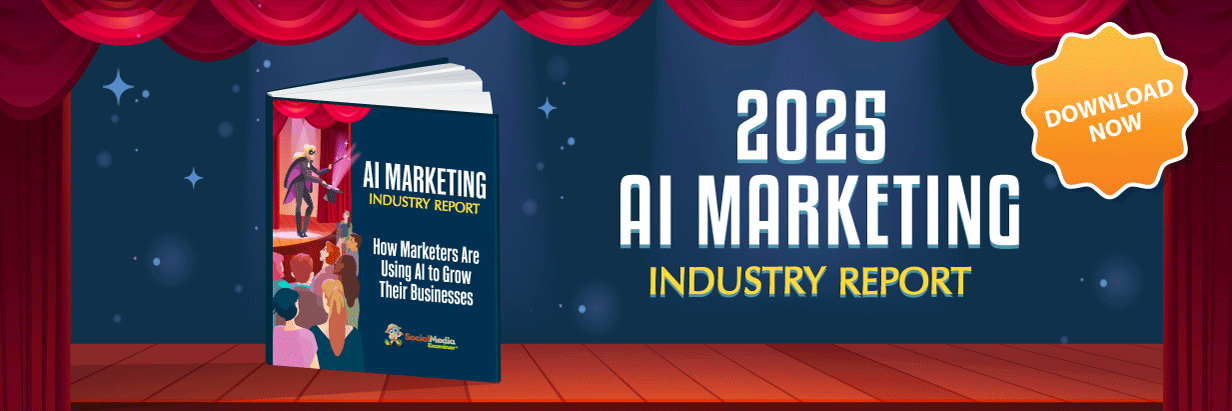
Your Competitors Are Using AI Daily. Are You?
While you're considering AI, 60% of marketers are already using it every single day–and 84% ramped up their usage this year alone.
We surveyed 735 marketers to uncover exactly how they're getting ahead with AI (and what's holding the rest back).
Key findings:
-
Which tool is overtaking ChatGPT
-
The #1 roadblock for non-users
-
Real strategies from 16+ industries
Download the data that matters →
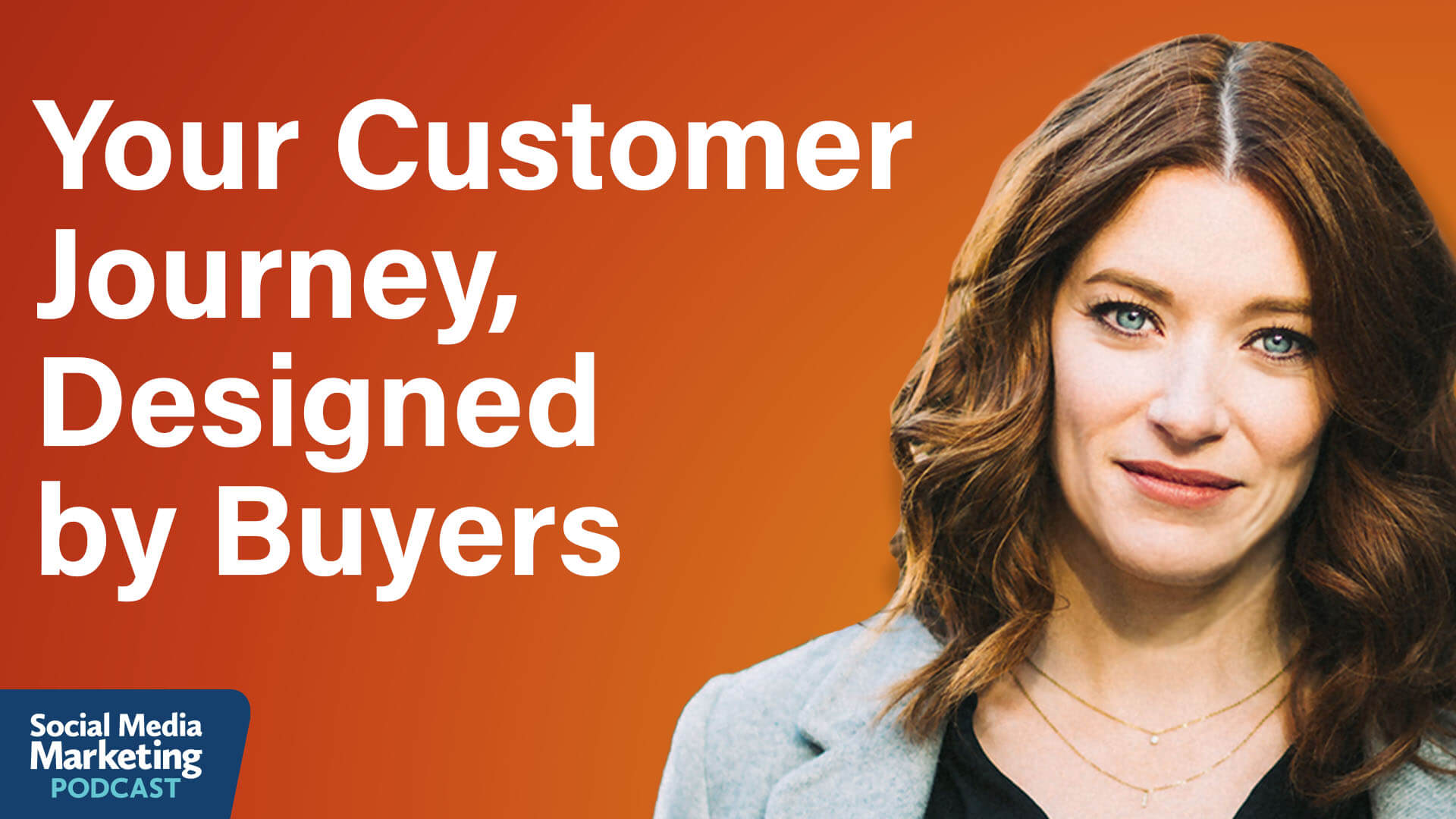
Driving Predictable Recurring Revenue With Customer-Led Growth
Customer-led growth is universally applicable across industries and business types.
The primary benefit of customer-led growth for marketers is dramatically reducing the guesswork in strategic decision-making. Your go-to-market strategy becomes significantly clearer, and you no longer have to operate in constant experimentation and hypothesis mode. Instead, you can make well-informed decisions about what to do and how to grow based on genuine customer insights.
Customer-led growth also serves as a framework that bridges cross-functional departments within your company. Marketing, customer success, product development, and sales teams develop a more organized and operationalized view of the customer experience and their specific roles within it.
The full framework shared in this interview centers on a fundamental principle: if your customers are successful, you will be successful.
Prioritizing and Implementing Strategic Changes
The prioritization of change recognizes that not all customer experience improvements deliver equal impact. Rather than jumping immediately into conversion rate optimization or small-scale split testing, the customer-led growth approach focuses first on foundational strategic elements.
Every team that implements this process develops a new messaging strategy because every team learns something significant about their customers and discovers what those customers actually care about most. The messaging guide that emerges from this customer understanding can influence multiple touchpoints including website content, customer onboarding communications, and marketing campaigns.
Following messaging development, teams typically address customer onboarding as the second priority, since this represents the area where most revenue leakage occurs. Industry statistics showing that seventy percent of users log in once and never return highlight why optimizing the onboarding experience creates such a significant impact.
The third priority involves updating website content and user experience. Websites often write checks that the customer experience can't cash, making promises that the actual product experience fails to deliver. Aligning website messaging with the actual customer experience creates much more sustainable lead generation and conversion.
Teams with limited resources should address these priorities sequentially rather than simultaneously. After fixing messaging and customer onboarding, but before making website updates, many teams benefit from pausing marketing campaigns, especially paid advertising efforts. Instead of continuing to drive traffic through misaligned messaging, reallocating resources to fix the foundational customer experience creates much better long-term results.
Only after establishing strong messaging, optimizing customer onboarding, and updating website content should teams resume or compound their marketing campaign efforts. This sequence ensures that more traffic encounters an experience designed around actual customer needs and motivations rather than internal assumptions or outdated understanding.
Identify Critical Milestones in Each Phase of the Customer Journey
The number of milestones within each phase depends entirely on your specific solution, customer complexity, and the intricacy of your product offering. While there's no formulaic approach that dictates four, five, six, or seven specific stages, this example provides a guiding model based on your customer's struggle, their evaluation of your product, and your business growth.
In the struggle phase, customers typically navigate two to three milestones maximum.
The first milestone occurs when they're experiencing the problem in their current environment, struggling with their existing approach. The second milestone, called the interest stage, happens when they enter active solution-seeking mode and discover that you exist, often by landing on your website or learning about your solution through other channels. The interest stage generally concludes when someone takes a significant action like booking a demo, attending a demonstration, signing up for your product, or starting a trial period.
At this point, they transition from general interest to active evaluation of your specific solution.
The first critical milestone in the evaluation phase is called first value, where you demonstrate value quickly enough that customers don't abandon the process. Industry statistics suggest that seventy percent of people who sign up for a product login once and never return, making rapid value demonstration crucial for preventing early abandonment. First value doesn't mean delivering complete value immediately, but rather providing enough value demonstration that customers see the promise of your solution and continue engaging. Various mechanisms can deliver this first value experience, depending on your product type and customer needs.
The final milestone in the evaluation phase is value realization, when customers fully adopt your product and experience their eureka moment. At this point, they recognize that your solution has solved their problem, they're committed to your approach, they might invite their team members, they abandon their previous methods, and they become committed to your solution. Value realization represents the end of the evaluation phase, when you've successfully solved their job-to-be-done and they've committed to your solution as their permanent approach.
The growth phase focuses on delivering continued value and expanding that value relationship over time. This phase typically involves continued value delivery and value growth components. Continued value ensures customers remain satisfied and engaged with your solution, while value growth introduces more advanced features, additional team members, or expansion into adjacent use cases. The growth phase is critical for net revenue retention, encompassing both customer retention and revenue expansion from existing customers.
Other topics discussed include:
-
Using the Jobs-to-be-Done Framework to Understand Your Customer
-
Conducting Switch Interviews to Uncover Customer Motivations
-
Identifying Customer-Centric KPIs to Measure Success
-
Auditing Your Buyer's Experience for Strategic Misalignment
Today's advice is provided with insights from Georgiana Laudi, a featured guest on the Social Media Marketing Podcast.
Watch the full interview on YouTube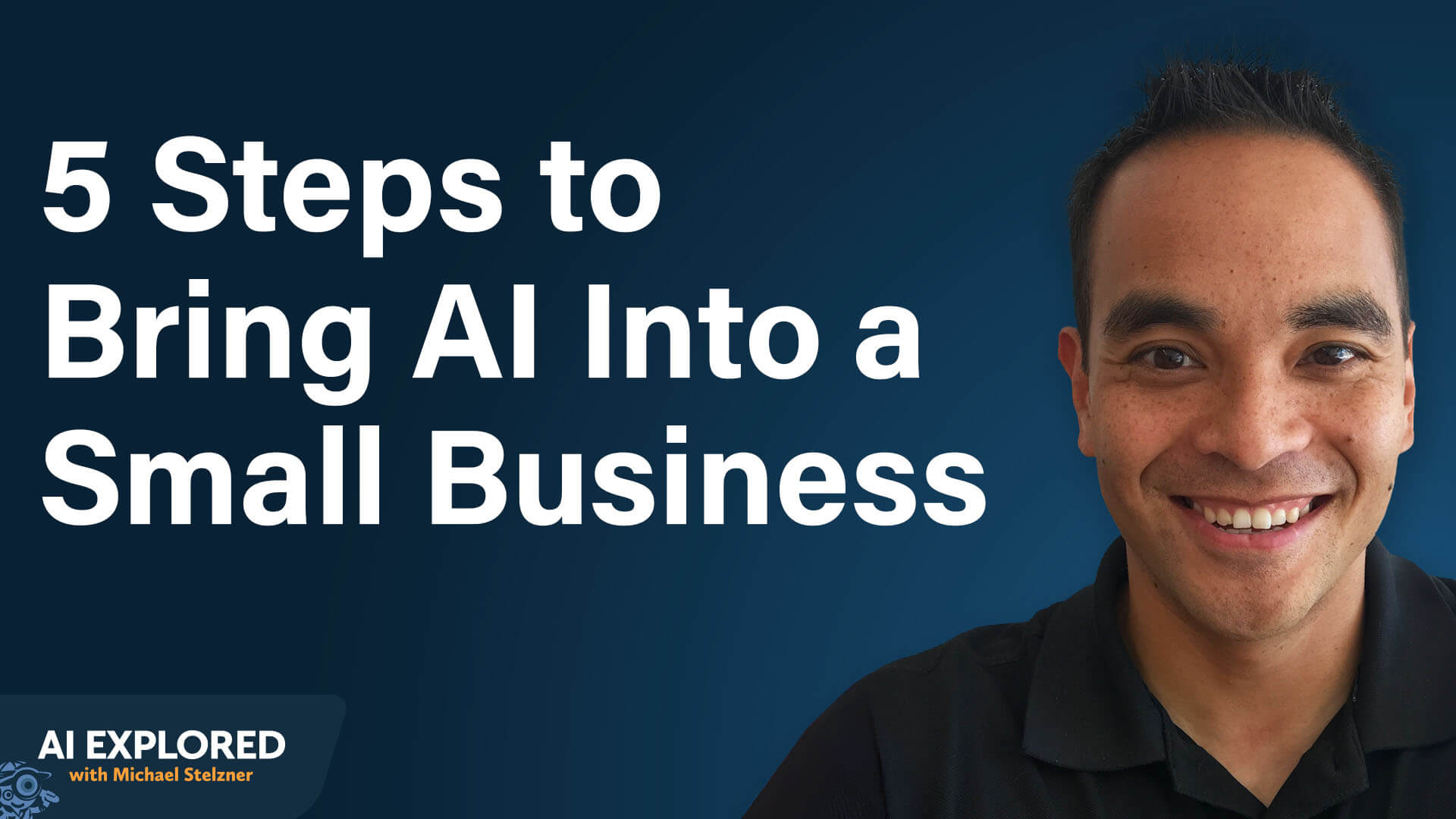
Successfully Deploying AI for Traditional Businesses
Three major misconceptions consistently undermine AI adoption efforts.
The first misconception is the assumption that AI implementation is easy. Many organizations approach AI with unrealistic expectations about the complexity involved in creating lasting change. The goal isn't just sporadic adoption for one month, but sustained adoption over three months, six months, and twelve months, because businesses will invest money and resources into these initiatives.
The second misconception is the assumption that you can simply bolt AI onto your current processes and workflows. While this approach will yield some productivity gains and efficiency improvements in the short term, businesses need to rebuild their processes and systems to be AI-centric, not just add AI components to existing workflows.
The third and most crucial misconception relates to change management. AI adoption requires fundamentally changing people's behaviors. Employees have been trained in their professions for years or decades, and each company has built processes over many years, especially traditional companies where there are years or decades of process complexity layered upon more process complexity. Adding AI into these established systems becomes extremely difficult without addressing the human element.
Launching AI Implementation Pilots
When launching pilots, dedicating staffing resources is absolutely critical.
There must be a designated pilot subject matter expert, preferably with a backup person. This individual needs to dedicate actual time to the project, not handle it as a side-of-desk activity, because most pilots won't launch successfully without proper attention, even for seemingly simple prompting tasks.
Yeh illustrates this with a construction company example involving invoice consolidation. The task required taking vendor PDFs from suppliers and checking whether invoices on vendor statements matched invoices in their internal system. One person had to manually review each invoice against their system by code to verify the number matches.
While this seems like a straightforward AI application - uploading the PDF and CSV of statements to have AI review discrepancies, identify missing items, and calculate differences - the implementation process took one to two weeks.
Someone AI-native might accomplish this quickly, but employees who don't use AI regularly or use it only for basic searches need time to develop effective prompts, adjust them, and test repeatedly to ensure the solution is reliable enough that they don't need to double-check results, which defeats the purpose of automation.
Building Accountability Systems to Ensure AI Adoption
Getting people to think about and use AI more consistently requires ongoing reinforcement to achieve sustained adoption across the organization.
Internal champions should form a committee, not primarily for developing policies and governance, but for maintaining sustained AI adoption..
The champion committee should meet with teams monthly to ask: Are you using the AI solution? Why aren't you using it? Are there issues that didn't surface initially?
Scaling AI Pilots to Improve Systems
Scaling successful pilots requires maintaining flexibility as tools and techniques continue evolving.
The construction company's invoice consolidation provides an excellent example of this evolutionary approach.
Initially, the team used ChatGPT o3 for consolidation, which significantly reduced required hours while still requiring manual drag-and-drop operations.
The next iteration involved creating a custom GPT with similar instructions but easier usability through simple drag-and-drop functionality.
The third iteration leveraged ChatGPT's integrations and connectors to eliminate drag-and-drop requirements entirely. Users could simply reference files with appropriate prompts, and the system would execute automatically.
The fourth iteration tested ChatGPT's agent mode to handle manual copy-and-paste operations automatically.
Combining agent capabilities with connectors and scheduled tasks created a fully automated solution that performs invoice consolidation every Friday without any manual intervention. Users conduct occasional spot checks for verification, but the process runs autonomously.
This progression from manual AI-assisted work to fully automated scheduling illustrates how pilot scaling involves continuous improvement alongside technological advancement. Each iteration builds upon previous successes while incorporating new capabilities as they become available.
This evolutionary approach ensures that businesses don't just implement AI once but continue advancing their capabilities as the technology landscape develops. It demonstrates the importance of building flexible systems that can adapt and improve rather than static solutions that quickly become outdated.
Other topics discussed include:
-
The Main Competitive Threat to Traditional Businesses From AI
-
The Most Important Long-Term Benefit of Properly Implementing AI In a Business
-
How Traditional Businesses Can Approach the Implementation of AI to Ensure Long-Term Success
-
Identifying the Right Use Cases for AI Implementation
-
Creating Comprehensive Discovery Summaries and Strategy
-
How an Accounting Company Implemented AI
-
Staff Training and System Adaptation Requirements
Today's advice provided with insights from Karl Yeh, a featured guest on the AI Explored podcast.
Watch the full interview on YouTube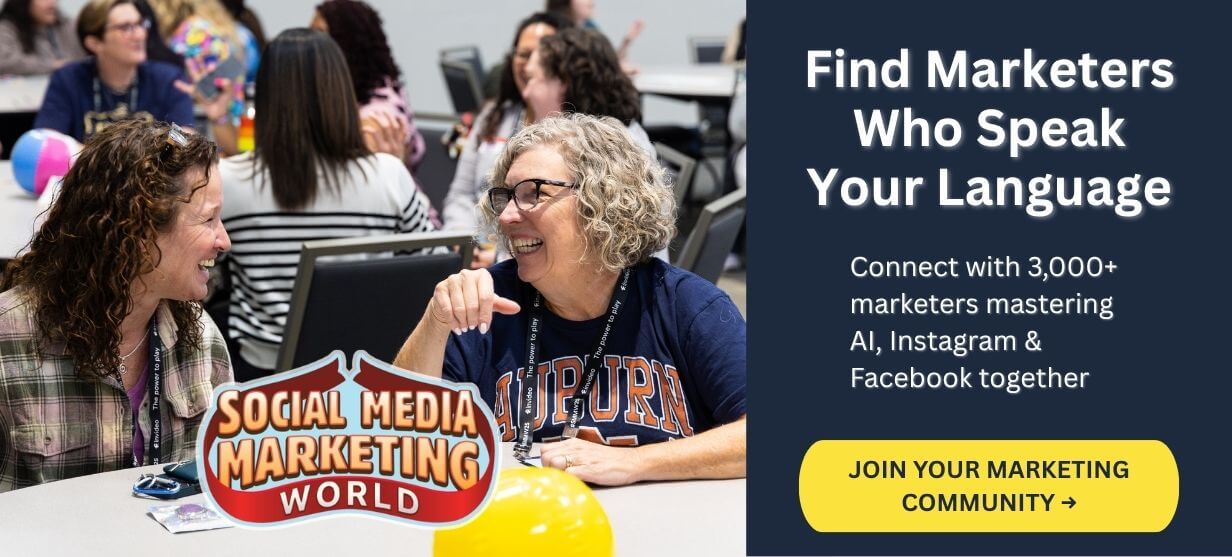
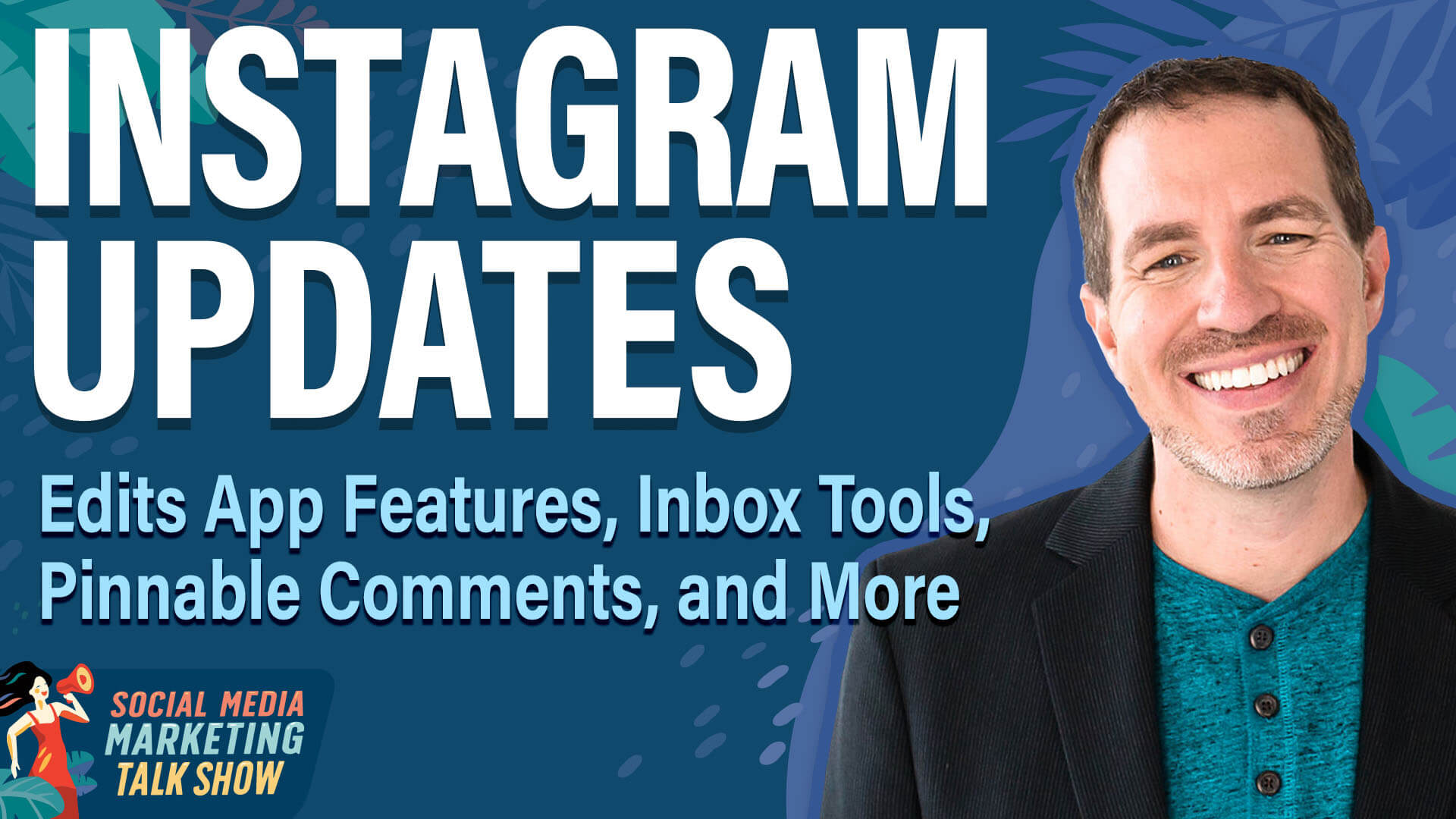
On this week's Social Media Marketing Talk Show, host Jerry Potter breaks down the latest Instagram news and what it means for marketers like you.
Pinnable Comments
Instagram has expanded its pin comments feature in a way that creates new ways for marketers to guide their audience's attention and actions. Previously, the platform only allowed users to pin comments from other people on their posts and reels. Now, creators can pin their own comments on both posts and reels.
This update provides marketers with several strategic advantages. First, it offers a legitimate reason to comment on your own content before anyone else does, which can encourage engagement by showing that the conversation has already started. This small psychological trigger can make other users more likely to add their own comments.
The ability to pin your own comments opens up multiple use cases for marketers. You can add additional context to your posts that might not have fit in the original caption. You can include calls to action that direct users to take specific steps. While you still cannot include clickable links in comments, you can direct users to memorable URLs that are easy to type, such as a straightforward domain name.
This feature also allows you to answer frequently asked questions by pinning a comment that addresses the most common inquiries about your content. One particularly powerful application involves providing updates on ongoing situations. Imagine posting content about an upcoming event or announcement with a note that more information will follow. Later, you can return to that post and pin a comment with the update, ensuring that anyone discovering the content—even days or weeks later—immediately sees the most current information.
The feature also enables you to respond to emerging patterns in your comments section. If many people ask the same question or express similar concerns, you can pin a comprehensive answer that addresses these points, saving you from repeatedly responding to individual comments with the same information.
Enhanced Inbox Tools for Direct Message Marketing
For marketers who conduct business through Instagram's direct messages, the platform has introduced several new inbox management tools that significantly improve organization and efficiency.
The first major addition is the ability to create custom folders for organizing messages. This feature allows you to streamline communications and categorize conversations based on your specific needs. If you're managing leads through Instagram DMs, you can now create folders to track prospects at different stages of your sales funnel. If you run promotions or campaigns, you can create folders specific to each initiative, making it easy to reference past conversations or analyze the success of different marketing efforts.
Instagram has also added new filtering options that let you sort messages according to various criteria. You can now filter messages by the follower count of the person messaging you, which can help you prioritize responses to influencers or high-value contacts. The verification status filter allows you to quickly identify messages from verified accounts, which can be useful for managing partnership inquiries or identifying potential impersonation attempts. Additional filtering criteria provide even more ways to organize and prioritize your inbox.
Perhaps the most valuable addition for many marketers is a dedicated folder specifically for story replies. This folder automatically separates responses to your stories from your general message inbox. For brands that post frequent stories and receive numerous replies, this organizational tool becomes invaluable.
The dedicated story replies folder allows you to strategically prioritize your engagement. You can choose to focus first on people who engage with your stories—often your most engaged followers—or you can prioritize your main inbox, depending on which type of interaction is more important to your business goals at any given time. This separation also makes it easier to identify patterns in how people respond to different types of stories, potentially informing your content strategy.
More Features, Tools, Changes, and Updates Discussed Include:
-
Audience Growth Milestone
-
Native iPad App and Viewing Habits
-
User-Controlled Algorithm Changes
-
Shots Content Expansion
-
Edits App Features
-
Vertical Live Streaming Discovery
Watch it on YouTube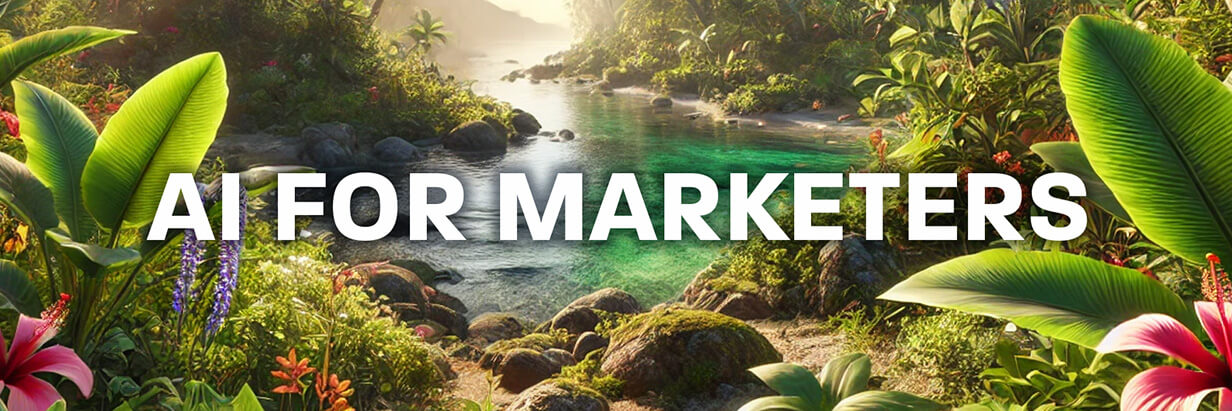
AI and Marketing: Data-Backed Insights From Michael Stelzner
There's a quiet revolution underway in marketing: 60% of marketers are already using AI daily, and that figure's expected to hit 90% by next year.
What does that mean for your job? Is being AI-curious enough anymore?
In a candid conversation, Michael Stelzner and Dan Sanchez unpack the 2025 AI Marketing Industry Report, revealing how AI is changing marketing work, what tools your peers are using, how they're using them, what might be coming next, and more.
You'll discover:
-
The surprising truth about AI and job displacement
-
Why daily AI use jumped from 37% in just one year—and what this means for your business
-
The #1 problem marketers face with AI
-
Which AI platform is quietly stealing market share from ChatGPT
-
The single biggest thing 81% of marketers want to master right now
Watch more here.

Threads Launches 'Communities' to Spark Interest-Based Conversations: Meta is introducing Communities on Threads—casual, public hubs for people to explore shared interests. Each community features its own Like emoji, a pinned presence in your feed, and public membership visibility on your profile. With over 100 test groups already live, Threads plans to roll out contributor badges and enhanced ranking in feeds to keep the most relevant conversations front and center. Meta
YouTube Pilots Open Call for Branded Content Deals: YouTube has introduced Open Call, a new BrandConnect pilot that offers Shorts-focused sponsorships to eligible U.S. creators in the Partner Program. Aimed at those new to brand deals, Open Call allows creators to submit uneditable Shorts for potential brand use, with earnings up to $3,500. Submissions and payment are managed through the YouTube Studio app, and selected content may be used in ads for up to 180 days. The pilot runs through December 2025. YouTube
ChatGPT Launches Interactive Apps and Opens SDK to Developers: OpenAI is launching a new wave of interactive apps inside ChatGPT, along with an Apps SDK for developers. These apps blend natural language interaction with visual elements like maps, playlists, and slides—all accessible directly in chat. Starting today, users outside the EU can try apps from Booking.com, Canva, Coursera, Figma, Expedia, Spotify, and Zillow. Developers can begin building now using the open-source Apps SDK built on the Model Context Protocol. Future updates include monetization options, a public app directory, and expanded availability to enterprise users. OpenAI
Facebook Adds AI, Friend Bubbles, and Better Controls to Reels: Facebook has rolled out several updates to improve how users discover and engage with reels. A smarter recommendations engine now delivers more relevant content faster, including a 50% rise in newly published reels shown daily. New friend bubbles let users see which reels their friends have liked and instantly start private chats, enhancing social interaction. Additional features include AI-powered suggested searches on select reels, a revamped Save button to collect favorite content, and easier ways to customize what appears in your feed. Meta
Instagram Launches Rings Award: Instagram is introducing a new award recognizing creators who break barriers and push culture forward through creativity. Selected by a global panel of creative legends, winners will receive a physical and digital ring designed by fashion icon Grace Wales Bonner. On-platform, winners will be celebrated with a gold ring around their profile photo in Stories, customizable profile features, and a personalized "like" button, making the award both a symbol of achievement and a creative toolkit for the year ahead. Instagram
OpenAI Launches AgentKit: The All-in-one platform for agent development includes Agent Builder, a visual interface for designing and versioning multi-agent workflows; ChatKit, a customizable chat UI toolkit that allows developers to embed chat-based agents directly into apps and websites; and Connector Registry, a centralized platform for managing data integrations and tool connections across OpenAI products. To improve performance evaluation, OpenAI has also expanded its Evals platform with new features such as datasets, trace grading, automated prompt optimization, and support for third-party models. Additionally, AgentKit includes safety features through Guardrails and introduces new capabilities for reinforcement fine-tuning, including custom tool calls and graders for GPT-5. While Agent Builder is currently in beta, ChatKit and the new Evals features are now generally available, with further deployment and monetization options expected soon. OpenAI
Threads Adds Manual Post Hiding for More Control Over Replies: Threads now lets users manually hide replies to their posts that may be offensive, misleading, or spammy. Hidden replies are moved to a separate section at the bottom of a thread, only visible to the user and the reply's author. This gives users more control over their conversations, helping maintain a cleaner and more respectful experience on the platform. Instagram
TikTok Enhances Ad Automation and Attribution Tools: TikTok has unveiled a suite of new automation and measurement features aimed at improving advertiser performance and control. The updated Smart+ platform now offers a single, flexible ad buying experience with customizable automation levels across targeting, creative, and budgeting. Integrated Symphony tools further streamline content creation using Gen AI to recommend and enhance video ads. For commerce campaigns, the updated GMV Max now includes a Creative Hub with granular performance insights. Additionally, TikTok expanded its Attribution Portfolio with third-party optimization through Google Analytics and introduced Assisted Conversions to better capture cross-channel impact. TikTok
TikTok Launches Shop Ads Partner Program: TikTok has expanded its Marketing Partners Program by adding a Shop Ads focus under the Marketing Technology badge. The new category helps sellers connect with certified partners like Flywheel and Teikametrics to supercharge sales through TikTok Shop. At the core of the offering is GMV Max, an AI-powered solution that streamlines ad setup, optimizes targeting, and boosts ROI across TikTok's discovery surfaces like the For You feed, Live, and Shop Tab. TikTok
YouTube Launches AI Remix Tool and Member-Only Stream Switch: YouTube has introduced a seamless way for creators to shift from a public livestream to a members-only session without ending the stream, helping boost membership perks and acquisition. The platform also expanded its Media Kit feature globally for all YouTube Partner Program creators, offering branded, data-rich PDFs to pitch to sponsors. Additionally, a new Shorts remix tool, "Extend with AI," allows users to generate AI-suggested segments based on existing videos, which link back to the original content to aid discovery. The AI remix feature is rolling out in English to all regions outside the EU and UK, with more expansions to follow. YouTube
YouTube Launches Activation Partners Program: YouTube is introducing the Activation Partners program, a network of vetted third-party providers specializing in campaign strategy and media buying. Designed to help brands and agencies maximize their advertising performance, this program connects advertisers with trusted experts who understand YouTube's unique ecosystem. Google
Claude Code Adds Plugin Support for Custom Workflows and Extensions: Claude Code has introduced plugin support, allowing developers to package and share combinations of slash commands, agents, hooks, and MCP servers to streamline and customize their coding environment. These lightweight plugins can be enabled or disabled as needed and are installable using a single command. Developers can also create and host plugin marketplaces to distribute tools internally or to the wider community. With plugins now in public beta, Claude Code aims to standardize customizations for everything from DevOps automation to code review workflows. Anthropic
Google Launches Gemini CLI Extensions: Google has launched Gemini CLI extensions, enabling developers to personalize their command-line experience by integrating external tools like Stripe, Figma, Postman, and Shopify directly into Gemini CLI. Each extension comes with a smart playbook that allows the AI to use these tools effectively right out of the box. The new Gemini CLI Extensions page helps developers discover and install community, partner, and Google-built extensions using a simple command. This launch positions Gemini CLI as a flexible, intelligent assistant capable of adapting to diverse developer workflows. Google
Meta Expands AI-Powered Reel Translations: Meta has extended its AI dubbing and translation tools for Instagram Reels to support Hindi and Portuguese, alongside English and Spanish. The feature uses the creator's own voice tone for natural dubbing and offers optional lip syncing for a seamless viewing experience. Creators maintain full control over translations, which can be reviewed, turned off, or removed. Meta also announced upcoming tools for translating text stickers and multi-speaker reels, aimed at helping creators reach global audiences with minimal effort. Instagram
Instagram Edits Adds PDF Reports and Creative Tools: Instagram's Edits app is rolling out new features this week, including the ability to generate PDF reports that share account and Reels performance insights. Users can now enhance videos with over 250 new sound effects—just in time for Halloween—alongside a new sound effect search function. The update also introduces Iconic Texts, offering dynamic combinations of fonts, colors, animations, and effects. Additionally, K-pop artist JENNIE's exclusive "ZEN SERIF" font joins the app's expanding design toolkit. Instagram via Social Media Examiner Editorial
Instagram Expands Add Yours Sticker with Multi-Media Templates: Instagram has introduced Add Yours Clips, a new template-based feature that lets users respond to Stories with multiple photos or videos instead of a single image. The update builds on the popular Add Yours prompt with creative flexibility. Users can access the update through the Add Yours Templates section under the label Add more with Add Yours. Lindsey Gamble via Threads
LinkedIn Restricts Competitor Analytics to Premium Company Pages: LinkedIn is limiting access to its Competitor Analytics feature, which provides insights into follower growth and post engagement from rival pages. Starting October 15, free-tier users will only be able to compare against one competitor, while Premium Company Pages can analyze up to nine competitors and view trending content from three. Social Media Today
Meta Launches Instagram and Facebook Creator Discovery APIs: Meta has officially released two new APIs aimed at scaling creator-brand collaborations across its platforms. The Instagram Creator Marketplace API and Facebook Creator Discovery API are now in general availability, offering tools to search for creators by keyword or filter and access audience insights like demographics and engagement rates. These APIs support branded content campaigns and prioritize creators likely to excel in partnership ads. Developers must complete app review to access the new permissions, with preview documentation already available to streamline onboarding. Meta
Meta Adds Flexible Spend Option for Excluded Placements via API: Meta has introduced a new capability for Marketing API advertisers that allows up to 5% of campaign spend to go toward excluded placements, provided it enhances performance. This optional setting must be enabled through new API endpoints and offers an alternative to fully blocking underperforming placements. Advertisers can adjust their configurations anytime, gaining more nuanced control over delivery strategies. While this feature adds flexibility, Meta continues to recommend Advantage+ placements for optimal reach and cost efficiency across campaigns. Meta
What Did You Think of Today's Newsletter?
Michael Stelzner, Founder and CEO
P.S. Add
michael@socialmediaexaminer.com into your contacts list. Use Gmail?
Go here to add us as a contact.
We publish updates with links for our new posts and content from partners. Your information: Email:
punjabsvera@gmail.com Opted in on: 2022-03-22 16:02:45 UTC.